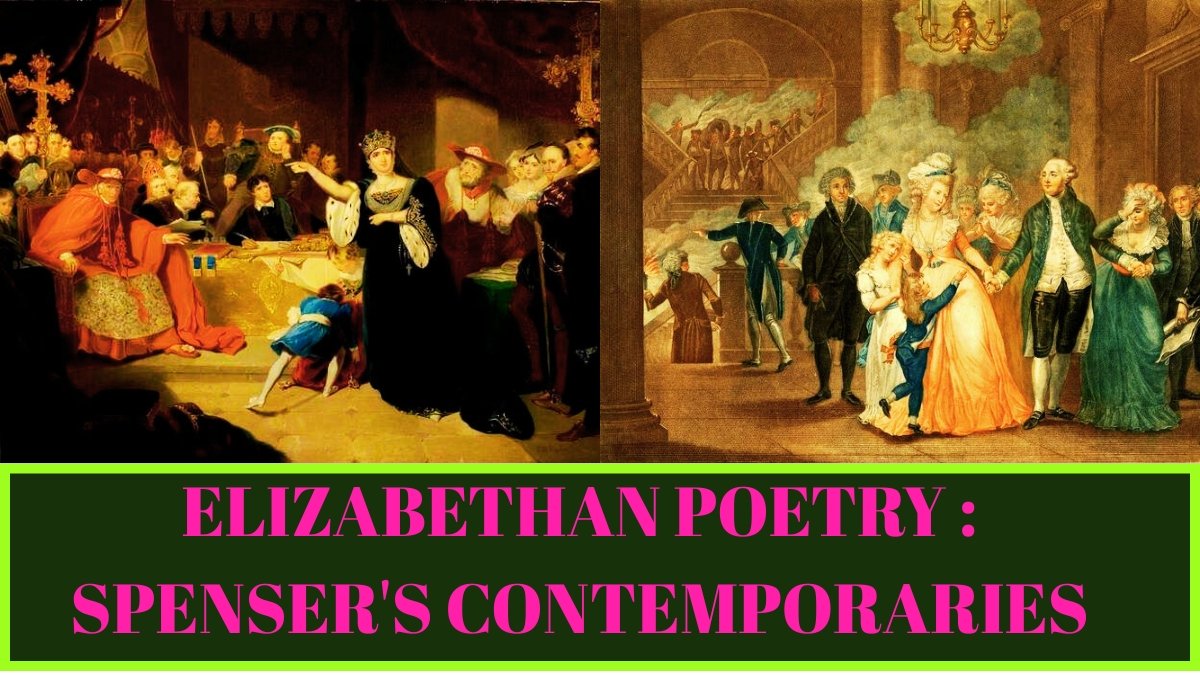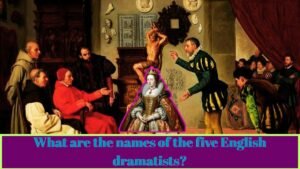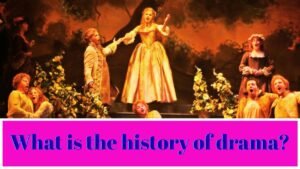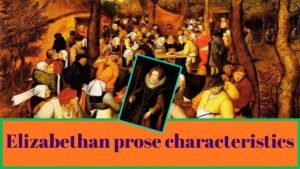ELIZABETHAN POETRY : SPENSER’S CONTEMPORARIES
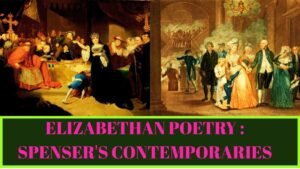
SPENSER’S CONTEMPORARIES:Sidney: his Astrophel and Stella-The Sonneteers: Daniel, Drayton, Constable Shakespeare’s sonnets-Lyrics and songs in Miscellanies, in stories and plays-Other kinds of poetry: historical, satirical, philosophical, etc.
Sidney (1554-1586)
Unlike Spenser who began life as a poor man and died poor, his friend Sir Philip Sidney was an aristocrat. He came of a very high family, was educated at Oxford and travelled over Europe. Spenser dedicating his Shepherd’s Calendar to him described him as ‘the noble and virtuous gentleman most worthy of all titles both of learning and chivalry’. There is neither flattery nor exaggeration in this description, for Sidney realized in his person, as nearly as possible for any man, the Renaissance ideal of the perfect gentleman. He was a Knight of chivalry, a polished courtier and a finished scholar. He died fighting at Zutphen (in the Netherlands) at the age of 32. The story of his noble act on the battlefield is well known. As he lay dying, he gave the cup of water which he needed himself to another wounded soldier saying, ‘Thy need is greater than mine’. The traditional hallow of romance about his person has not dimmed with the passage of time.
Sidney’s poetical work consists of the sonnet series Astrophel and Stella and a few other scattered sonnets and verses in his prose romance Arcadia. The Arcadia and his critical treatise Apology for Poetry will be noticed under Prose.
None of Sidney’s works were published in his life time and Astrophel and Stella must have circulated privately in manuscript before 1591 when it was published. This is a series of more than a hundred sonnets together with some songs addressed to Penelope Devereux, daughter of Walter Devereux, first Earl of Essex. The sonnets record his hopeless passion for Penelope who had married Lord Rich. Except for the rhyme scheme which is not uniform the sonnets of Sidney are English or Shakespearean in form with three quatrains and a couplet. The general level of these sonnets is very high despite the fact that Sidney is not above using the conventional ‘conceits’ or laboured ingenuities of expression. He was not a mere copyist. The note of sincerity is struck in the last line of the first sonnet ‘Fool, said my muse to me, look in thy heart and write.’ That in which he tells the moon of his lady’s cruelty is worth quoting in full-
WITH how sad steps, O moon, thou climb’st the skies! How silently, and with how wan a face!
What! may it be that even in heavenly place That busy archer his sharp arrows tries? Sure, if that long-with-love acquainted eyes Can judge of love, thou feel’st a lover’s case: I read it in thy looks; thy languish’d grace To me, that feel the like, thy state descries.
Then, even of fellowship, O Moon, tell me, Is constant love deem’d there but want of wit? Are beauties there as proud as here they be? Do they above love to be loved, and yet Those lovers scorn whom that love doth possess? Do they call ‘virtue’ there-ungratefulness?
The one in which he addresses Sleep-
Come, sleep; O Sleep, the certain knot of peace.
and that in which he abjures Love
Leave me, O Love, which reachest but to dust, are equally beautiful. In short, the sincerity of feeling, matched here and there with choice expression, marks out some of these sonnets as among the finest of that age.
The Sonneteers
After its introduction by Wyatt and Surrey the sonnet in its strict form was not practised for a whole generation. Sidney, whose sonnet sequence appeared in 1591, restarted the fashion and there was an extraordinary outburst of sonnets in the last decade of the century. Almost all poets of the period wrote sonnet sequences, good, bad, and indifferent, addressed to their sweet hearts real or imagined. The more important of these are Fulke Greville’s Caelica, Samuel Daniel’s Delia, Michael Drayton’s Idea, Spenser’s Amoretti, Henry Constable’s Diana and Shakespeare’s, which though written about this time were not published until 1609.
Each of the poets mentioned above has some distinction or other. Fulke Greville is too scholarly to be very popular, but his Caelica has a few delightful things. Specially his lines on Myra beginning-‘I with whose colours Myra dressed her head’. Though Daniel and Drayton, both major poets, lack the sinews of the sonnet, namely, passion, they are not without distinction of style.
Daniel is straightforward and crisp in diction-And therefore, Delia, ’tis to me no blot To have attempted, tho attained thee not.
(Sonnet 3)
Thou may’st repent that thou hast scorn’d my tears, When Winter snows upon thy sable hairs.
(Sonnet 4)
Drayton is more vigorous and forthright-
‘Since there’s no help, come, let us kiss and part’. Rossetti pro-nounced this sonnet as ‘almost the best in the language, if not quite’.
Constable’s sonnets have the charm of delicate fancy and scholarly elegance.
Shakespeare’s sonnets are a class by themselves. The collection is unequal and some of the sonnets are merely ‘clever’, being fashion-able exercises in quibbles and conceits common to the generality of sonneteers. But the best of them are worthy of the great poet, and in their high imaginative quality, felicity of diction and lyrical music, are unequalled in Elizabethan poetry. Only Milton’s sonnets when they appeared could challenge comparison with his. The collection is miscellaneous as well as mystifying and the industrious researches of more than three centuries have not penetrated the mystery of the persons addressed in the sonnets. Some of them are quite impersonal. Of the personal sonnets, some are addressed to a friend, a handsome young man of rank and wealth, and some to a dark-haired lady. The friend is popularly identified with Shakes-peare’s patron, the young Earl of Southampton, to whom he dedicated his narrative poems Venus and Adonis and The Rape of Lucrece. The dark lady whom Shakespeare loved betrayed him with his patron friend. He forgives the friend, but is unforgiving to the lady on whom he pours his vials of wrath and hate.
The original source of inspiration of all these sonnet sequences was, of course, Petrarch whose love sonnets to Laura had started the fashion in Italy and then in France. The English poets imitated, borrowed, sometimes simply translated from their Italian or French masters. Because of this, some critics have condemned the whole lot as artificial. It is undeniable that the majority of these sonnets are monotonous and dull. They are mere exercises in conceits which are repeated ad nauseum. Where every Delia or Caelia is a paragon of beauty and flint hearted, where every lover languishes in despair and utters his undying love in the same conceits, it becomes quite apparent that the writer is not inspired by love but is simply playing with a fashionable fiction. Only Spenser, Sidney and Shakespeare had sincere motives and even in following an artistic convention acquitted themselves creditably. Of the swarm who joined the craze, only a few attained that degree of artistic excellence which has entitled them to a place in the anthologies. Considering that more than two thousand sonnets were produced during this period, it was not to be expected that all would be first rate or that every poet or poetaster would show individual originality. In following a particular literary convention the test of originality is truth of feeling and the manner of its treatment. A poet may borrow an idea or image, and yet may be original if he handles it independently in his own way. Making due allowance, therefore, for imitations and translations, quite a fair percentage of these sonnets are worthy to rank beside the best lyrical poems in the language.
Lyrics and Songs. Another type of poem, even more numerous than the sonnets, which flourished in this age was the lyric. Humanism had revealed to the people a new joy in life and this joy burst into song. England became ‘a nest of singing birds’. Lyrics and songs by the hundred written by poets known known and unknown appeared in collections of the type of Tottel’s Miscellany and in song-books published with music. We have already mentioned two of the miscellanies, The Paradise of Dainty Devices (1576) and The Gorgeous Gallery of Gallant Inventions (1678) which appeared before Spenser. These were crude as compared with those which followed them in the Spenserian period-A Handful of Pleasant Delights (1584). The Phoenix Nest (1593), The Passionate Pilgrim (1599), England’s Helicon (1600) and Poetical Rhapsody (1602). The best of these is England’s Helicon which contains poems by most of the poets of this period, including Sidney, Spenser, Drayton, Lodge, Peele, Greene, Marlowe, Watson, Nicholas Breton, Barnfield, Raleigh and Shakespeare. The majority of the poems in these collections are anonymous, only a few being signed, and but for these anthologies even the names of some of the songsters would have been lost. Of the numerous song-books the most famous were the four Books of Airs by Campion containing songs set to music.
Besides the miscellanies and song-books, songs are found scattered through stories and plays of the period. Though Spenser was not devoted to the lyric, he has given us some delightful songs in The Shepherd’s Calendar and The Fairy Queen. Sidney’s songs in the Astrophel and Stella have already been alluded to and there are some very good ones in his Arcadia. The best songs of this age, however, were written by the dramatists-Lyly, Peele, Lodge, Nash, Greene, Marlowe, Shakespeare, Beaumont, Fletcher, Dekker, Heywood, and Ben Jonson, Some of these songs are in their plays, others outside them.
Greene’s lullaby-
Weep not my wanton, smile upon my knee,
Dekker’s-
Art thou poor, yet hast thou golden slumbers,
Marlowe’s-
Come live with me and be my love,
and Ben Jonson’s-
Drink to me only with thine eyes,
these and many others not less delightful may be read in The Oxford Book of English Verse.
But the glory of song is Shakespeare’s. The songs sprinkled through his plays are unsurpassed for their originality, spontaneity, feeling for nature and verbal music. And they are of all sorts. There are love songs, nature songs, pathetic songs, and songs that are purely fantastic. Some of the most memorable may be referred to by their first lines-
Tell me where is Fancy bred? (The Merchant of Venice)
O mistress mine, where are you roaming? (Twelfth Night)
When daisies pied and violets blue (Love’s Labour’s Lost)
When daffodils begin to peer (Winter’s Tale)
Blow, blow, thou winter wind (As you Like It)
Full fathom five thy father lies (The Tempest)
These songs too may be read in The Oxford Book of English Verse. but they are best enjoyed in the dramatic context where they appear.
Considering their mass production the lyrics and songs attain a level of excellence that is surprising, for even the third rate are at least poetry. Though their main theme is love, they deal with all kinds of subjects and defy classification. In their naturalness, inno-cence and sweetness they are so childlike and yet highly artistic in choice of words and versification. No other age has produced such abundance of song or recaptured their old world charm.
Longer Love Poems. In addition to the short and sweet lyrics there were a few longer narrative love poems. Marlowe’s Hero and Leander was left unfinished and was completed by Chapman. Follow-ing this lead Shakespeare wrote Venus and Adonis (1593) (1593) and The Rape of Lucrece (1594). All the three are erotic poems full of sensuous beauty. They were very popular though frowned upon by the puritans.
Other Kinds of Poetry
Though love poetry was by far the most popular, there were so many other kinds-historical, philosophical, religious, moral, satirical and pastoral. Of these, only the historical and satirical deserve some notice. The historical school includes William Warner, Daniel and Drayton. They were all inspired by patriotic motives to glorify their country. Warner’s Albion’s England (1586), a huge poem in fourteeners is a history of England from Noah to Elizabeth. Daniel’s Civil Wars of York and Lancaster and Drayten’s The Barons’ Wars, England’s Heroical Epistles, The Ballad of Agincourt and the enormous Polyolbion in thirty books complete the list of historical poems. The best of these is the Ballad of Agincourt-‘Fair stood the wind for France’ and may be read in The Oxford Book of English Verse.
The satirical school consists of Bishop Hall, Lodge, Marston, Tourneur and Donne. Satire had been attempted before Spenser in Gascoigne’s Steel Glass, but was not followed up (except in prose) until towards the end of the sixteenth century. These satires are coarse in matter and harsh and rugged in versification. Donne’s satires are the best. Though most of his poetical work was done in the reign of James, he has a romantic vein by virtue of which he belongs to the Elizabethans.
Of the remaining kinds of poetry, the philosophical school is best represented by Lord Bacon and Sir Henry Wotton. The former’s poem on Life and the latter’s on the Character of a Happy Life can be read in Palgrave’s Golden Treasury.
